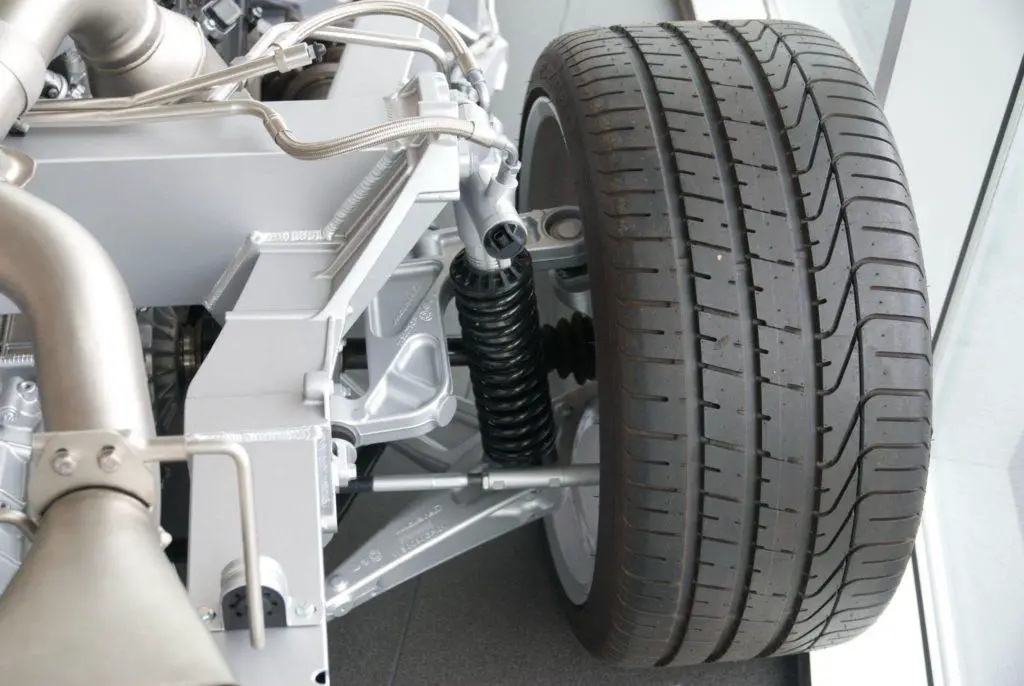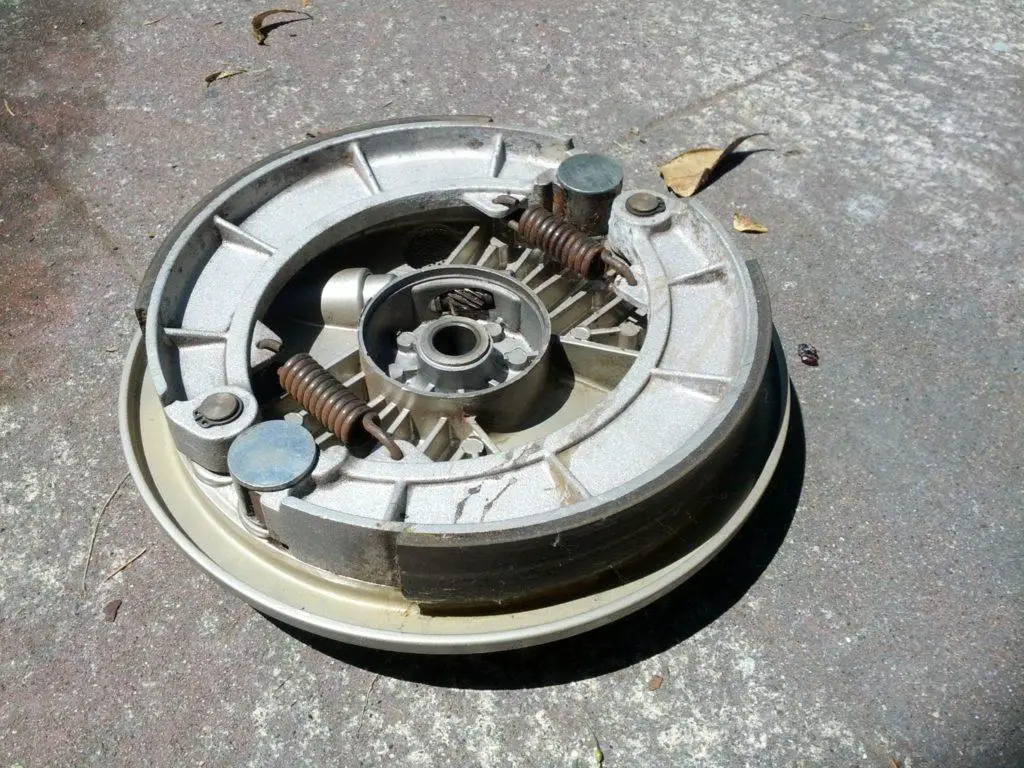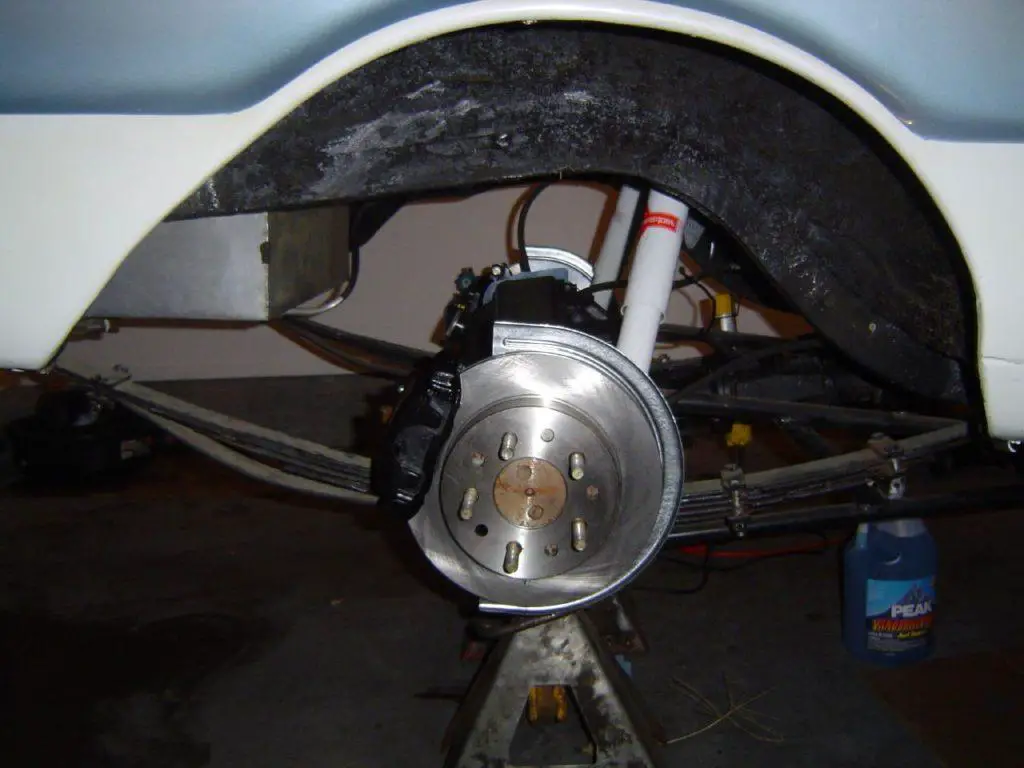The braking system is one of the most important components in the car’s framework. Most car owners know that when the brake pedal is depressed, the rotation of the wheels slows down, and the vehicle comes to a stop.
However, there is a lot more that goes on during the braking process. If you’re wondering what happens when you push the brake pedal to stop your car, keep reading to learn more about how do car brakes work.
Jump To
How Does the Braking System Work on the Car?
On average, a driver exerts about 70 pounds of force on the brake pedal to seamlessly halt the car. While the entire ordeal seems straightforward, there is much more that goes on behind the scenes.
A flawless brake system employs the force of friction to stop the kinetic energy flow when the car is in motion. For modern cars, hydraulic brakes pressurize and transfer the brake fluid to the brake friction material, which brings the car to a complete stop. In some vehicles, the cylinder pushes against the brake drum to reduce the speed.
Before we proceed to the different components, let’s first understand how brake hydraulics work with inherent examples.
Brake Hydraulics
Hydraulic processes always work in conjunction with each other to power the engine force. In simple terms, the hydraulic system uses brake fluid to transfer pressure from the controlling center to the braking function.
According to Pascal’s principle, an increase in pressure on one piston is synonymous with a gradual increase in the other piston.
For example, suppose a wooden board is placed on top of a triangular-shaped lever. When force is applied to the left end of the lever, it produces the same amount of force on the other end. If the force on the left side is twice much as the force on the right side, double the force is applied as it acts through the distance. The basic idea behind this analogy is that two pistons are fitted on opposite ends and are connected through an incompressible fluid. Due to this, force applied at one point of the controlling function is transferred to another.

Friction for Braking
Now that we have a basic understanding of the hydraulic system let’s examine the role of fiction in the braking system. Friction is the force that resists movement between two surfaces in direct contact with each other. Friction is important for the brake system functionally to work seamlessly in a car.
In this case, the level to move something is directly proportional to the object’s weight. In auto brakes, friction is generated when the brake pad (friction material) presses firmly against the spinning wheel’s disc. So greater the force applied to the brake pad, the more powerful the stopping force is.
Clamping Action
When it comes to the action that transcends the entire process, one of the key components of the braking system is the calipers. These big clamps sit behind every wheel and generate the clamping force needed for the braking mechanism to function effortlessly.
This clamping action forces the brake pads against the brake rotor, bringing the car to a standstill altogether. So, when you press the brake pedal, the rapid increase of hydraulic pressure is further transmitted to the calipers via the brake fluid, creating friction and stopping your vehicle.
When the hydraulic pressure generated by the brake pedal is applied, the entire vehicle goes through a series of processes before it comes to a stop.
Types of Braking Systems
For cars, there are primarily two kinds of brakes – drum brakes and disc brakes. Although both are powerful devices that increase your braking systems’ performance, both have unique nuances. We will compare both of the brake systems below.
Drum Brakes
Drum brakes are one of the earliest in-tire brake systems introduced and patented by Louis Renault in 1902. Although the first few models used complete levers to implement the brakes, they were soon applied using hydraulic pressure.

Drum brakes usually latch onto the wheel, subsequently carrying out the braking function. A drum brake system consists of wheel cylinders, calipers, brake pads, and brake drums. When the brake pedal is depressed, brake fluid is transferred to the drum brake’s wheel master cylinder.
The fluid then activates the two pistons in the cylinder to expand and press the brake shoes against the drum brakes, which slows the wheel down. Drum brakes require less pressure than disc brakes to deploy the hydraulic pressure. Surprisingly, they are also much cheaper.
Disc Brakes
A formidable opponent to drum brakes, disc brakes are becoming more popular in modern car models. Although disc brakes were patented in the same year as drum brakes, they became practical to use in automobiles almost a decade later.

Moreover, disc brakes are widely preferred by most car manufacturers because, under intense heat and pressure, drum brakes can no longer produce the friction needed to slow the car down.
On the other hand, disc brakes work along the same lines but perform better than their counterparts. Instead of a drum, there is a disc attached to the wheel.
When the pedal is depressed, brake fluid is transferred through the fluid lines, reaching the calipers. The piston causes the calipers on the disc brakes to squeeze the brake pads against the brake rotors, ultimately stopping the car.
Drum Brakes Vs. Disc Brakes
Drum brakes work exceptionally well due to their unique design and brilliant braking mechanism. Although drum brakes are a predecessor to disc brakes, they do not perform as seamlessly as the latter option does.
Disc brakes are fairly superior in performance and mechanism since the brakes are not inside a drum. The open design allows air to cool off much more quickly, creating more friction than drum brakes.
Moreover, the design allows for increased surface area in the brake pad, which slows the car down faster. Overall, the seamless integration of drum brakes coupled with the practical design accounts for its flexibility in front wheels.
Anti-Lock Brakes
Anti-lock braking systems work synonymously with the braking system to prevent your tires from locking up completely. When your tires are locked up, they become more susceptible to skidding and prevent you from steering your car.
In the 1950s, this feature wasn’t prevalent, so if a kid ran in the middle of the road, there was no way to avoid skidding or steering your car left or right.
To avoid skidding, you would have to repeatedly pump the brake, which sounds easy only in theory. The anti-lock braking systems are designed, so the driver does not pump the brakes profusely. Instead, they must leave the foot on the pedal with considerable force to stop the car abruptly.
How does it work? There are special wheel sensors located in the wheel hub that detect the speed of the wheels. The ABS module monitors the data from the sensors to check whether your wheels have changed speed. When you press on the wheels, the ABS checks if one wheel is moving slower than the other. In turn, it will reduce the hydraulic pressure sent to the brake and prevent skidding.
Is Your Braking System Working?
While brakes are self-functioning units designed with the latest technology, you should still be wary of the possible defects in cars. Some of the warning signs are listed below.
- The brake light is turned on
- There are loud and squeaking noises
- The brake fluid is leaking
- An overpowering burning smell
- The vehicle bounces or pulsates when you stop short
- Vibrations on the steering wheel
- Pressing the brake pedal down hard to stop
If you notice these signs in your vehicle, you should immediately get your brakes checked by a mechanic to avoid malfunctions in the future.
Conclusion of how do car brakes work
Regular maintenance of your brakes ensures durability and prevents you from unexpected mishaps. A basic understanding of your car brakes helps you identify any defects to get damaged parts removed or replaced.
We hope this article gave you an intrinsic view of the braking system and cleared your doubts regarding its intrinsic processes.

3 thoughts on “How Do Car Brakes Work?”
Comments are closed.